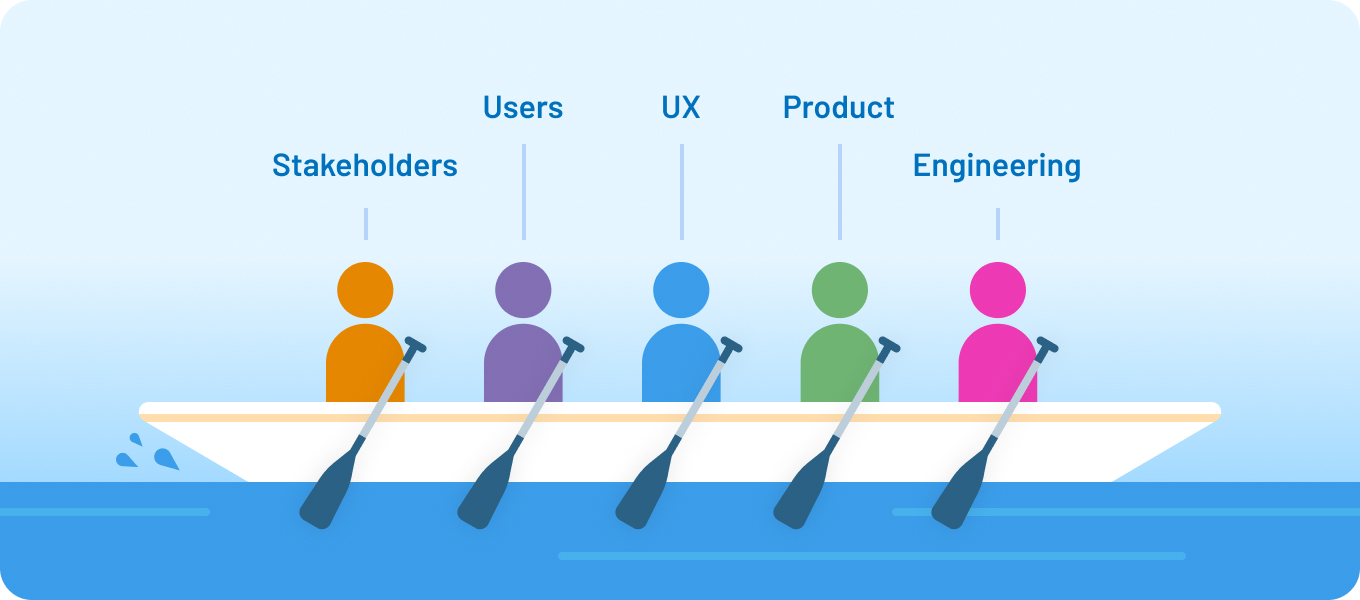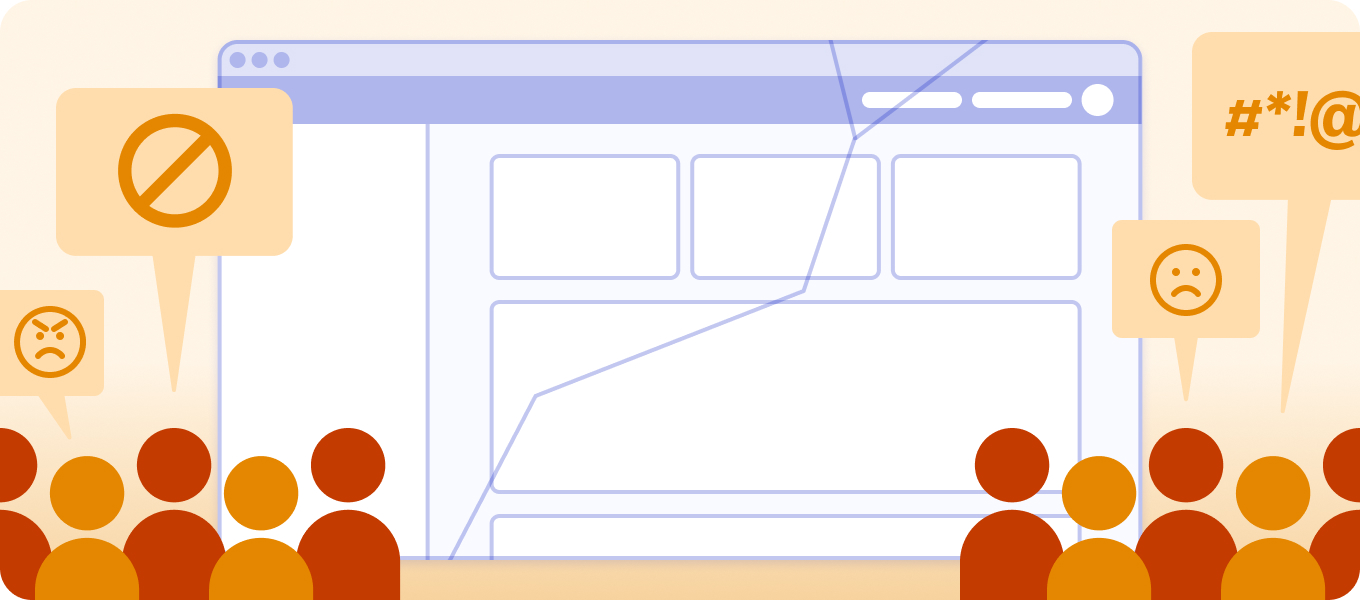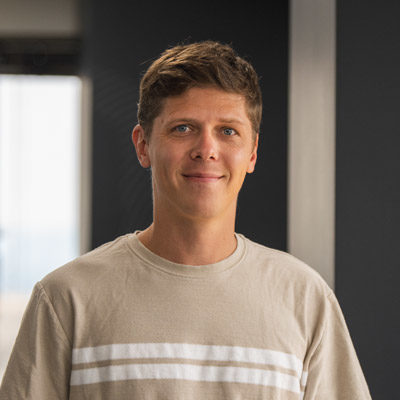Planning EdTech product growth requires balancing innovation with user stability—expanding functionality without disrupting the workflows that existing users depend on. Companies that scale successfully involve key stakeholders early, work in low-fidelity to validate ideas quickly, and include users in the planning process before committing resources. This guide shows EdTech product leaders how to structure planning processes that enable growth while maintaining user satisfaction and avoiding costly fire drills.
In This Article:
- Why Growing EdTech Products Need Planning Evolution
- Key Takeaways: Critical Planning Risks and Success Principles
- What Are the Risks of Growing EdTech Products Without Strategic Planning?
- Why Growing EdTech Products Need Strategic Planning
- How Should EdTech Companies Structure Planning for Growth?
- What Are the Most Common Planning Pitfalls for Growing EdTech Products?
- Frequently Asked Questions About EdTech Product Planning for Growth
- Ready to Move Forward to Implement Better Strategic Planning?
Why Growing EdTech Products Need Planning Evolution
Your EdTech product has found its footing with a dedicated user base. The intuitive, fast-moving approach that got you here has served you well. But now you’re at a critical juncture—perhaps you’re expanding functionality, targeting new user segments, or completely reimagining core features. Whatever the catalyst, one thing is clear: a focus on engineering that often propels products’ initial successes might now need a shift towards researching users’ needs and experiences.
This article is part of a three-part series examining how EdTech product leaders can optimize their UX program for growth. Part One focuses on user research and testing strategies that build the foundation for informed decision-making. Part Two explores ideation and planning processes that translate research into actionable roadmaps. Part Three covers how design and engineering teams can collaborate better to execute efficiently. Together, these pieces provide a comprehensive framework for scaling your EdTech product thoughtfully and successfully.
Many successful EdTech products start with a strong technical foundation, often built by engineering-focused teams solving specific educational challenges. However, as these products grow and user bases expand, companies frequently hit a ceiling where technical excellence alone isn’t enough to drive continued growth.
Key Takeaways: Critical Planning Risks and Success Principles
- 4 Major Risks: Frustrated users, misaligned vision, resource drain from fire drills, lost product champions
- 5 Planning Principles: Stakeholder alignment, low-fidelity iteration, early technical involvement, user inclusion, regular reassessment
- 3 Common Pitfalls: Disrupting existing users, over-complicating initial releases, failing to reassess plans
What Are the Risks of Growing EdTech Products Without Strategic Planning?
Before diving into solutions, let’s consider what’s at stake. Making sweeping changes without proper planning can lead to several critical issues:
Frustrated User Base
If you disrupt your existing users’ workflows too dramatically, you might find yourself spending valuable development time fixing problems rather than implementing new features to attract more users.
The consequence: Development teams get pulled into reactive mode, abandoning planned growth initiatives to address user complaints. Your roadmap stalls while you rebuild trust with users.
Misaligned Vision
Business goals and user needs can appear to conflict, especially when growth initiatives don’t align with current product direction.
The consequence: Product teams receive contradictory direction. Resources get wasted on false starts and rework as different stakeholders push competing priorities.
Resource Drain
When user disruption occurs, teams often end up in “fire drill” mode, dropping everything to fix issues for existing users instead of focusing on planned improvements.
The consequence: Your most talented team members spend time on damage control instead of innovation. Product velocity slows as unplanned work consumes capacity. Growth initiatives repeatedly get postponed.
Lost Product Champions
Your existing users aren’t just customers—they’re often your product evangelists. If they become vocal about their dissatisfaction, it can actively dissuade new users from adopting your product.
The consequence: Your best marketing channel—word-of-mouth from satisfied users—reverses direction. Prospects hear warnings from current users, making sales efforts exponentially harder.
Why Growing EdTech Products Need Strategic Planning
As your EdTech product prepares to scale, you’re likely facing complex decisions about your next steps. Many organizations reach a point where they need to scale up product complexity to grow their user base. They realize the intuitive, often ad hoc approach to UX that got them off the ground needs to evolve to a more strategic one with well-planned roadmaps and structured release cycles.
The challenges of scaling user experience become increasingly complex. What works for a small, dedicated user base often falls short when catering to a larger, more diverse audience. The transition from reactive, intuitive UX decisions to a strategic, scalable approach isn’t just beneficial—it’s essential for clearing potential barriers in the process required for rapid yet sustainable growth.

How Should EdTech Companies Structure Planning for Growth?
Creating an effective planning process requires balancing speed with thoroughness, inclusion with efficiency, and innovation with stability.
Start With Alignment
Begin your growth planning with focused kickoff meetings that bring together key stakeholders. However, be selective about ongoing involvement. Rather than having weekly meetings with large groups where progress stalls, establish a cadence that balances inclusion with efficiency.
The key to balancing inclusion and efficiency is to set clear, intentional goals for each checkpoint in advance and determine which stakeholders you need to consult to gather the necessary insights for confident decision-making. Consider having representation from each stakeholder group (1-2 people) rather than involving entire teams.
Work Fast in Low-Fidelity
In the early stages of solving complex problems, speed and understanding are crucial. Begin with low-fidelity work that helps teams grasp the full scope of challenges and potential solutions. This approach allows for quick iteration and validation before committing significant resources to specific solutions.
The goal at this stage is to fail fast and cheaply. Every bad idea you eliminate through low-fidelity exploration saves significant development time later. Teams that jump directly to high-fidelity design or development often find themselves committed to approaches that user testing would have invalidated early.
Involve Technical Leads from the Start
There’s one crucial lesson we’ve learned over nearly two decades of working with EdTech product companies: involve your technical leads from the start. Spending weeks planning without technical input can lead to wasted effort when architectural limitations surface later. Having technical representation in early discussions helps validate ideas and identify potential challenges before significant resources are invested.
Consider the scenario where weeks of planning have to be revised because technical feasibility wasn’t considered early enough. Having technical representation in early planning helps validate architectural implications, identify potential scalability challenges, and assess maintenance requirements. This is especially crucial when working on complex features that touch multiple parts of your system.
Include Users in Your Growth Planning
Consider scheduling co-creation or ideation sessions that directly involve your users, especially when tackling complex problems. This collaborative approach helps generate solutions while ensuring user needs are understood from the start.
When helping the iClicker team plan their 3.0 vision, we first identified potential opportunities internally, then brought these ideas to users for validation and prioritization. This process helped ensure both business goals and user needs were met while keeping users engaged and excited about the product’s future direction.
For particularly complex challenges, consider bringing users into the process even earlier. Co-creation sessions can help uncover unexpected insights and starting points for solutions, while making users feel included and valued in the development process. These sessions are particularly valuable when you’re unsure where to begin with a complex feature or workflow redesign.
This approach has multiple benefits:
- When users are involved early in the process, they often become more invested in the product’s evolution.
- They can act as advocates for your platform, sharing their involvement in shaping its future with peers at their institutions.
- These engaged users often become product champions, helping spread positive word-of-mouth about your commitment to user needs.
However, it’s important to focus on understanding users’ underlying needs rather than just collecting feature requests. Users may propose specific solutions without awareness of technical constraints or the broader product vision.
Build in Regular Reassessment Points
While having a clear roadmap is crucial, it’s equally important to build in opportunities to reassess and adjust as you progress. The initial MVP you define may need to adapt based on user feedback and project learnings. Regular checkpoints help ensure you’re still moving in the right direction and allow for course correction when needed.
What Are the Most Common Planning Pitfalls for Growing EdTech Products?
1. Disrupting Existing Users
Major changes without proper user consideration can transform product advocates into critics. Consider implementing beta experiences for significant changes, allowing users to transition gradually to new features or interfaces while maintaining access to familiar workflows.
2. Over-Complicating Initial Releases
Sometimes the best approach isn’t creating entirely new features but optimizing what’s already working. Look for opportunities to enhance existing functionality before building completely new solutions.
3. Neglecting to Reassess
While having a clear roadmap is crucial, it’s equally important to build in opportunities to reassess and adjust as you progress. The initial MVP you define may need to adapt based on user feedback and project learnings. Regular checkpoints help ensure you’re still moving in the right direction and allow for course correction when needed.
Frequently Asked Questions About EdTech Product Planning for Growth
When should EdTech companies transition from ad hoc to strategic planning?
When your user base grows beyond what intuitive, fast-moving approaches can support. Organizations typically reach a point where they need to scale up product complexity to grow their user base, and realize the ad hoc approach to UX that got them off the ground needs to evolve to a more strategic one with well-planned roadmaps and structured release cycles.
How do you balance planning thoroughness with speed to market?
Use low-fidelity methods that maximize learning before committing significant resources. Begin with low-fidelity work that helps teams grasp the full scope of challenges and potential solutions. This approach allows for quick iteration and validation before committing to specific solutions.
Should technical teams be involved early in planning?
Yes, from the start. Spending weeks planning without technical input can lead to wasted effort when architectural limitations surface later. Having technical representation in early discussions helps validate ideas and identify potential challenges before significant resources are invested, especially when working on complex features that touch multiple parts of your system.
How should EdTech companies involve users in planning?
Consider scheduling co-creation or ideation sessions that directly involve your users, especially when tackling complex problems. This collaborative approach helps generate solutions while ensuring user needs are understood from the start. However, focus on understanding users’ underlying needs rather than just collecting feature requests.
What if initial plans need to change during development?
Build in opportunities to reassess and adjust as you progress. The initial MVP you define may need to adapt based on user feedback and project learnings. Regular checkpoints help ensure you’re still moving in the right direction and allow for course correction when needed.
Ready to Move Forward to Implement Better Strategic Planning?
Ready to evolve your planning process for growth? Start by gathering your key stakeholders and establishing clear goals, validation processes, and success metrics for your growth phase.
Consider:
- Stakeholder alignment: Who needs to be involved at each stage of planning?
- Low-fidelity validation: How can you test ideas quickly before committing resources?
- Technical feasibility: Are your technical leads involved from the start?
- User involvement: When and how will you include users in the planning process?
- Reassessment gates: Where will you build in checkpoints to evaluate and adjust?
Growth doesn’t have to mean disruption. With thoughtful planning and the right process, you can evolve your product while maintaining—and even strengthening—your relationship with users. Start by gathering your key stakeholders and establishing clear goals, validation processes, and success metrics for your growth phase.
As EdTech UX Research and Design experts, Openfield can support you during this time of transition. By involving the right stakeholders, maintaining user engagement, and planning for technical realities, we can create a growth strategy that serves both your business goals and your users’ needs. Get in touch with us to learn more about how we can help.
This article is the second in our three-part series on optimizing your UX program for EdTech growth. If you missed it, check out Part One on strategic research approaches that build the foundation for informed decision-making, or continue to Part Three, where we explore design and prototyping best practices that bring your plans to life while maintaining engineering efficiency.



